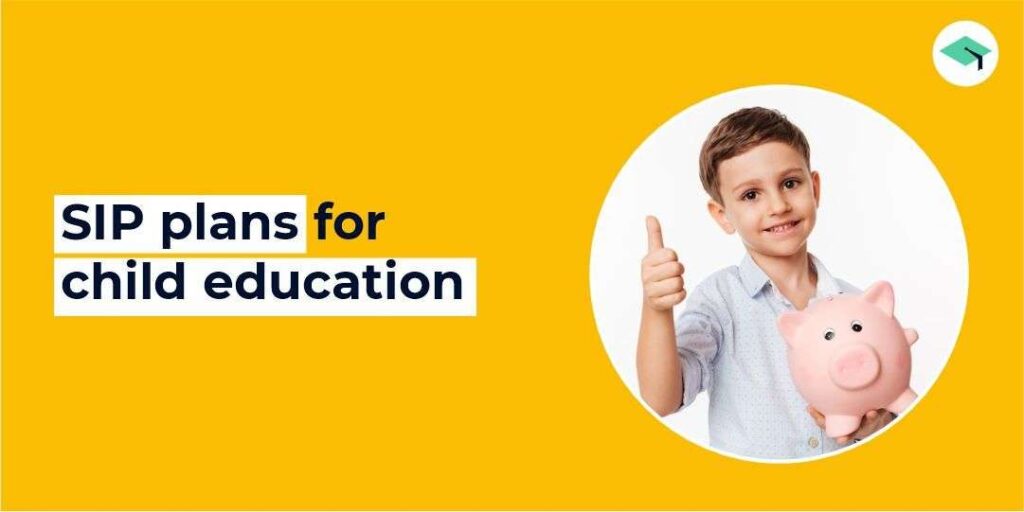Imagine a world where investing in education is not only a smart financial move but also a way to create lasting change. With “The Ultimate Guide: How to Invest in Education,” you will unlock the secrets to making informed decisions, whether you’re a parent looking to secure your child’s future or a philanthropist seeking to maximize impact. This comprehensive guide combines research, expert advice, and real-life examples to show you how to navigate the complex world of education investments. From choosing the right educational institutions to supporting innovative initiatives, this guide will empower you to make a difference in the lives of countless individuals and shape the future of education.
The Ultimate Guide: How to Invest in Education
Education plays a crucial role in shaping individuals’ lives and has far-reaching impacts on societies and economies as a whole. By investing in education, you can contribute to personal growth, social development, and economic progress. This comprehensive guide aims to provide you with an understanding of the importance of education and various ways to invest in this vital sector.

This image is property of Amazon.com.
1. Understanding the Importance of Education
The Role of Education in Individuals’ Lives
Education is more than just acquiring knowledge; it empowers individuals and equips them with essential skills to succeed in life. It fosters intellectual growth, critical thinking, and problem-solving abilities. Education lays the foundation for personal development, enabling individuals to explore their interests, passions, and talents.
Moreover, education opens doors to a wide range of opportunities. It enhances employability and career prospects, leading to higher income potential and financial stability. Education instills confidence and self-belief, enabling individuals to pursue their dreams and aspirations.
The Impact of Education on Societies and Economies
Education is the key to societal progress and economic development. A well-educated populace forms the backbone of a thriving society. Education promotes social harmony, equality, and tolerance by fostering empathy and respect for diversity. It empowers individuals to actively participate in democratic processes, making informed decisions for the betterment of their communities.
From an economic perspective, investing in education has substantial benefits. A skilled and knowledgeable workforce drives innovation, productivity, and economic growth. Education equips individuals with the necessary skills demanded by employers, thereby reducing unemployment rates and poverty levels. Moreover, educated individuals contribute to higher tax revenues, making education investments self-sustainable in the long run.
2. Types of Educational Investments
When it comes to investing in education, there are various avenues to consider. Let’s explore the different types of educational investments.
Investing in Formal Education
Formal education, such as primary, secondary, and tertiary education, is a traditional approach that offers structured learning within established institutions. Investing in formal education involves supporting schools, colleges, and universities through financial contributions or collaborations. This type of investment ensures access to quality education for students, facilitates infrastructure development, and encourages academic excellence.
Investing in Informal Education
Informal education refers to learning that occurs outside the traditional classroom setting. This includes self-paced learning, community programs, workshops, and mentorship initiatives. Investing in informal education involves supporting organizations and initiatives that promote lifelong learning opportunities, skill development, and knowledge dissemination in unconventional ways.
Investing in Skill Development Programs
Skill development plays a crucial role in bridging the gap between education and practical application. Investing in skill development programs enables individuals to acquire specific skills demanded by industries and enhances their employability. These programs focus on vocational training, entrepreneurship development, and technical skills, catering to the evolving needs of the job market.

This image is property of i.etsystatic.com.
3. Factors to Consider Before Investing
Before making any investments in education, it is important to consider several factors to ensure the effectiveness and sustainability of your efforts.
Identifying Your Objectives
Clarify your objectives and determine what you aim to achieve through your educational investments. Whether it is empowering individuals, addressing specific societal challenges, or supporting economic growth, a clear understanding of your goals will guide your investment decisions.
Assessing the Education Sector
Thoroughly assess the education sector to identify the areas of need and potential for impact. Evaluate existing educational resources, infrastructure, policies, and the quality of education provided. This assessment will enable you to target your investments towards areas that require the most support and intervention.
Evaluating Potential Returns
Consider the potential returns of your educational investments, both in terms of social impact and financial viability. Assess the long-term benefits and outcomes of your investments, such as improved educational attainment, reduced inequality, and increased economic opportunities. Conduct a cost-benefit analysis to gauge the sustainability and returns on your investments.
Understanding the Risks Involved
Like any investment, there are inherent risks involved in investing in education. Identify and understand the risks associated with your chosen investment strategies. These may include changes in government policies, economic instability, or unforeseen challenges specific to the education sector. By being aware of potential risks, you can develop contingency plans and mitigate their impact.
4. Investing in Educational Institutions
There are various types of educational institutions where you can channel your investments. Each institution serves a specific purpose and caters to diverse educational needs. Let’s explore some of the common institutions to consider investing in.
Public Schools and Universities
Public educational institutions play a crucial role in providing affordable and accessible education to a wide range of students. Investing in public schools and universities helps improve infrastructure, enhance educational resources, and support scholarships for students from disadvantaged backgrounds.
Private Schools and Universities
Private educational institutions often provide specialized education and offer unique learning environments. Investing in private schools and universities can contribute to the development of innovative teaching methods, research facilities, and scholarships. Your investment can directly impact the quality of education and create opportunities for talented students.
Vocational and Technical Institutions
Vocational and technical institutions focus on imparting practical skills for specific industries. Investing in vocational and technical institutions helps address the growing demand for skilled workers and promotes career-oriented education. By supporting these institutions, you can ensure individuals receive the necessary training to secure stable and fulfilling employment.
Online Educational Platforms
Online educational platforms have gained significant popularity in recent years, providing flexible and remote learning opportunities. Investing in online educational platforms contributes to widening access to education, especially for individuals in underserved areas or those with limited resources. These platforms support e-learning technologies, content development, and virtual classrooms.

This image is property of indvyapar.in.
5. Investing in EdTech Startups
The EdTech (Education Technology) industry has been revolutionizing the education sector through innovative solutions and digital learning platforms. Investing in EdTech startups allows you to support technological advancements in education and tap into the potential of digital learning.
Overview of the EdTech Industry
The EdTech industry encompasses a wide range of technologies, such as learning management systems, educational software, virtual reality, and artificial intelligence. These technologies aim to enhance teaching methods, personalize learning experiences, and provide access to education globally.
Evaluating EdTech Startup Opportunities
When considering investments in EdTech startups, carefully evaluate the technologies, market potential, and scalability of the startup. Look for innovative solutions that address critical educational challenges, have a competitive advantage, and demonstrate a strong growth trajectory. Assess the team’s expertise and track record, ensuring they have the necessary skills to navigate the dynamic EdTech landscape.
Understanding the Challenges and Risks
Investing in EdTech startups comes with its own set of challenges and risks. The sector is highly competitive, and technological advancements can quickly become obsolete. Regulatory hurdles, user adoption, and sustainable revenue models are also factors to consider. It is crucial to thoroughly analyze the business model, sustainability plan, and market demand before making any investments.
6. Supporting Scholarships and Grants
Scholarship programs and grants are valuable tools for promoting education and creating opportunities for deserving individuals. By supporting scholarships, you can make a significant impact on students’ lives and enable them to pursue higher education.
Donating to Educational Foundations
Donating to educational foundations that offer scholarships and grants is a direct way to support students in need. Research and identify reputable foundations aligned with your educational objectives. Your donations can help cover tuition fees, provide financial aid, or fund research projects, allowing talented individuals to access education regardless of their financial background.
Establishing Your Own Scholarship Programs
If you have the resources and capacity, consider establishing your own scholarship programs. Determine the eligibility criteria, selection process, and funding structure for your scholarships. Collaborate with educational institutions or partner with existing scholarship organizations to ensure your scholarships reach the most deserving candidates.
Collaborating with Existing Scholarship Initiatives
Collaborating with existing scholarship initiatives allows you to leverage their expertise and networks. Partner with established organizations that align with your educational goals and share common values. By joining forces, you can expand the reach and impact of existing scholarships, reaching a broader pool of students.

This image is property of Amazon.com.
7. Investing in Education Technology
Education technology plays a crucial role in modernizing the education sector and enhancing learning experiences. By investing in education technology, you can support the development of innovative software, platforms, and content that facilitate effective teaching and learning.
Developing Educational Software and Platforms
Investing in the development of educational software and platforms enables the creation of interactive and engaging learning environments. These technologies can enhance student engagement, teacher effectiveness, and educational outcomes. Look for software solutions that align with your educational objectives and have the potential to scale.
Investing in E-Learning Content Creation
Quality educational content is vital for effective e-learning experiences. Investing in e-learning content creation ensures the availability of engaging and curriculum-aligned resources. This investment can support the development of interactive videos, e-books, gamified learning modules, and other multimedia content that caters to diverse learning styles.
Funding Research and Development in EdTech
Research and development (R&D) in EdTech fuels innovation and drives advancements in educational technologies. By funding R&D initiatives, you contribute to the development of cutting-edge technologies, pedagogical approaches, and evidence-based practices. Support research institutions, startups, and educational technology-focused initiatives to foster continuous innovation.
8. Investing in Education Bonds
Education bonds allow individuals to invest directly in the education sector and earn fixed returns over a specified period. These bonds are issued by educational institutions or government bodies and offer a secure investment option. By investing in education bonds, you can contribute to educational infrastructure development and ensure access to quality education for future generations.
Understanding Education Bonds
Education bonds function similarly to traditional bonds, where investors lend money to educational institutions or government agencies. These bonds finance educational projects, capital investments, or operational expenses of educational institutions. Investors receive periodic interest payments and the principal amount upon maturity.
Evaluating the Risks and Returns
Before investing in education bonds, evaluate the creditworthiness of the bond issuer and assess the associated risks. Consider factors such as interest rate fluctuations, inflationary pressures, and the financial stability of the issuing institution. While education bonds generally offer lower returns compared to other investment options, they provide a safe and predictable investment avenue.
Choosing the Right Education Bonds
When choosing education bonds, consider the reputation and track record of the issuing institution. Evaluate the purpose and potential impact of the bond-funded projects. Additionally, analyze the terms and conditions, maturity period, and interest rates offered by different bonds. Diversify your investments across multiple issuers to reduce risks.

This image is property of d3it91zw76pwp5.cloudfront.net.
9. Investing in Teachers and Educators
Investing in teachers and educators is a fundamental aspect of improving the quality of education and fostering a conducive learning environment. By supporting professional development and promoting high-quality teaching practices, you can directly impact the educational outcomes of students.
Supporting Teacher Training Programs
Investing in teacher training programs enables educators to enhance their pedagogical skills, subject knowledge, and classroom management techniques. These programs can focus on innovative teaching methodologies, technology integration, or specialized training for specific subjects or levels. By equipping teachers with the necessary tools, you empower them to deliver better educational experiences.
Investing in Professional Development
Continuous professional development is essential for educators to stay updated with evolving teaching practices and educational trends. Investing in professional development opportunities, such as workshops, conferences, and online courses, enables teachers to expand their skills, exchange knowledge, and network with peers. By fostering a culture of lifelong learning, you promote excellence in teaching.
Promoting High-Quality Teaching Practices
Investing in promoting high-quality teaching practices involves supporting initiatives that improve the overall quality of education. This can include curriculum development, the implementation of effective assessments, and the adoption of evidence-based teaching strategies. By emphasizing evidence-based decision-making and teaching practices, you contribute to the advancement of education as a whole.
10. Monitoring and Measuring the Impact
Monitoring and measuring the impact of your educational investments is crucial to ensure accountability and effectiveness. By establishing key performance indicators (KPIs) and regularly assessing educational outcomes, you can adapt your investment strategies based on the results.
Establishing Key Performance Indicators (KPIs)
Identify relevant KPIs that align with your educational objectives and investment goals. These KPIs can include metrics such as educational attainment rates, graduation rates, employment outcomes, and learner satisfaction. Set realistic targets and regularly evaluate progress to gauge the success of your investments.
Measuring the Educational Outcomes
Measure and analyze the educational outcomes resulting from your investments. Conduct impact assessments, surveys, and evaluations to understand the changes and improvements brought about by your contributions. Use data-driven insights to identify areas for improvement and refine your investment strategies accordingly.
Adapting Investment Strategies Based on Results
Based on your evaluation of the impact, adjust your investment strategies to maximize effectiveness and address emerging educational needs. Continuously monitor trends in the education sector, evolving policies, and changing social dynamics to ensure your investments remain relevant and impactful. Collaboration with stakeholders and staying informed about best practices can further enhance the efficacy of your investments.
In conclusion, investing in education is a powerful way to make a positive impact on individuals’ lives, societies, and economies. By understanding the importance of education, considering various investment avenues, and evaluating the risks and returns, you can contribute to creating a better future through education. Whether through supporting educational institutions, investing in EdTech startups, providing scholarships, or promoting high-quality teaching practices, your investments can empower individuals, foster social progress, and drive economic growth. Embrace the opportunity to invest in education and help shape a brighter future for all.










